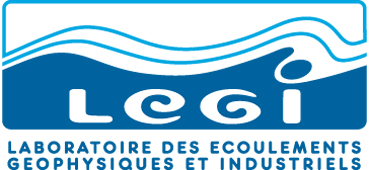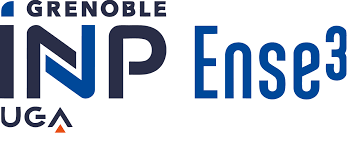Research
Over the last 15 years, I have been using two-phase flow models to infer the role of fine-scale processes in sediment transport. I always tried to test and validate the models against experimental data and I have developed myself experiments when these experimental data were missing.
During my PhD I started the development of a 1D vertical model for sedimentation-consolidation of mud (Chauchat et al., 2013). This numerical model was developed in Fortran and the governing equations were discretized using a mix between finite difference and finite volume methods. The velocity-pressure coupling was resolved using a projection algorithm from Chorin-Temam. I further developed this model to add the resolution of the horizontal momentum balance equations to simulate unidirectional intense sediment transport regimes, the so-called sheet-flow, for which I implemented the mu(I) rheology to model the ranular stresses (Chauchat, 2018).
During my postdoc at IUSTI (Aix-Marseille University, Marseille, France), I collaborated with Marc Médale on the development of an in-house Finite Element Method (FEM) model written in Fortran. This numerical code has been used to simulate laminar bed-load problems (Chauchat and Médale, 2010) and dry granular flows (Chauchat and Médale, 2014) using the mu(I) rheology. The numerical model solves the Navier-Stokes equations using a second order accurate FEM and a penalization method is used to deal with the incompressibility constraint. Different regularization methods have been implemented and tested to regularize the mu(I) rheology. This model has been further used to investigate laminar bed-load transport in a 3D configuration.


During T. Revil-Baudard Phd (2014), we extended the two-phase flow model presented above to the turbulent regime. We demonstrated for the first time the relevancy of the dense granular flow rheology for describing granular stresses in intense bed load transport (Revil-Baudard and Chauchat, 2013). In 2011, we started to develop a new experiment at LEGI on sheet-flow (see figure below). Using the ACVP (Acoustic Concentration and Velocity Profiler, Hurther et al., 2011) we acquired for the first time colocated profiles of mean velocity, mean concentration, Reynolds stress, tuburlent intensities and Reynolds fluxes (Revil-Baudard et a., 2015, 2016). These data are available on zenodo at https://zenodo.org/record/1156633#.XJAVCdEiHmk.
In 2014 I started to collaborate with Prof. Tom Hsu (Univ of Delaware, USA) on the development of a 3D open source two-phase flow model in the CFD library openFoam: sedFOAM. Different models for the granular stresses and for the turbulence are available (see page http://www.legi.grenoble-inp.fr/people/Julien.Chauchat/pages/sedfoam-project.html ). The code is fully parallel and can run on distributed memory ones, this characteristic allows to perform numerical simulations of large problems. So far the largest computation performed using sedFoam consisted of 30 Million cells and lasted for 60,000 CPU hours on approximately 200 processors, it was a LES simulation of the sheet flow experiment presented above (Cheng et al. 2018, see figure below).
More recently, I supervised T. Nagel's Phd (2018) on scour modeling. For the first time, we used a two-phase flow model to simulate the 3D scour around a cylindrical pile (see figure below) and we were able to perform a simulation over 10 minutes of dynamics with a very reasonalbe prediciton of the scour depth upstream and downstream the pile.
In collaboration with P. Frey (IRSTEA, Grenoble, France) and B. Chareyre (Lab. 3-SR, Grenoble, France), I have also developed different Eulerian-Lagrangian numerical models. I co-supervised D. Marzougui PhD (3S-R, Grenoble, France) during which we implemented lubrication forces in an existing pore-scale fluid DEM model (Catalano et al., 2013) implemented in YADEhttp://yade-dem.org/, an open-source Discrete Element Method model. I also co-supervised R. Maurin PhD (IRSTEA, Grenoble, France), during which we coupled the fluid phase momentum balance equation of my 1D vertical model (Chauchat, 2018) with YADE for the Lagrangian part. This model has been used to investigate the dense granular flow rheology in bed-load transport and the bed slope effect.
In collaboration with Prof. T.-J. Hsu (Univ. Delaware, USA), I have co-supervised Z. Cheng PhD (2016) during which we have developed an Eddy Interaction Model (Cheng et al., 2018b)for CFDEM http://www.cfdem.com/about-cfdemrproject, an open-source model coupling openFOAM with LIGGGHTTS.
Using these different numerical models, I have tried to infer the role of fine-scale turbulent and granular processes in sediment transport. My main contribution is on the dense granular flow rheology in bed-load transport. The second important topic that I contributed to is on turbulence-particle interactions and more especially the particle-induced turbulence damping and the effect of particles inertia on the suspended-load.


